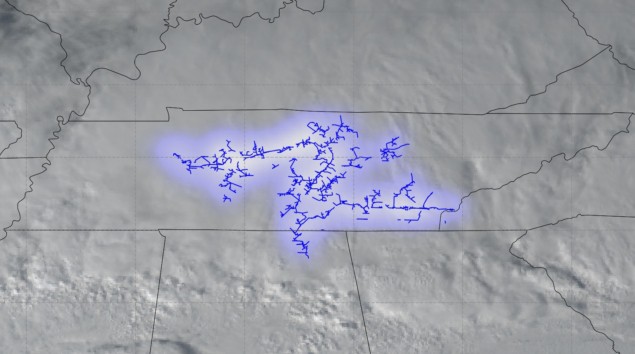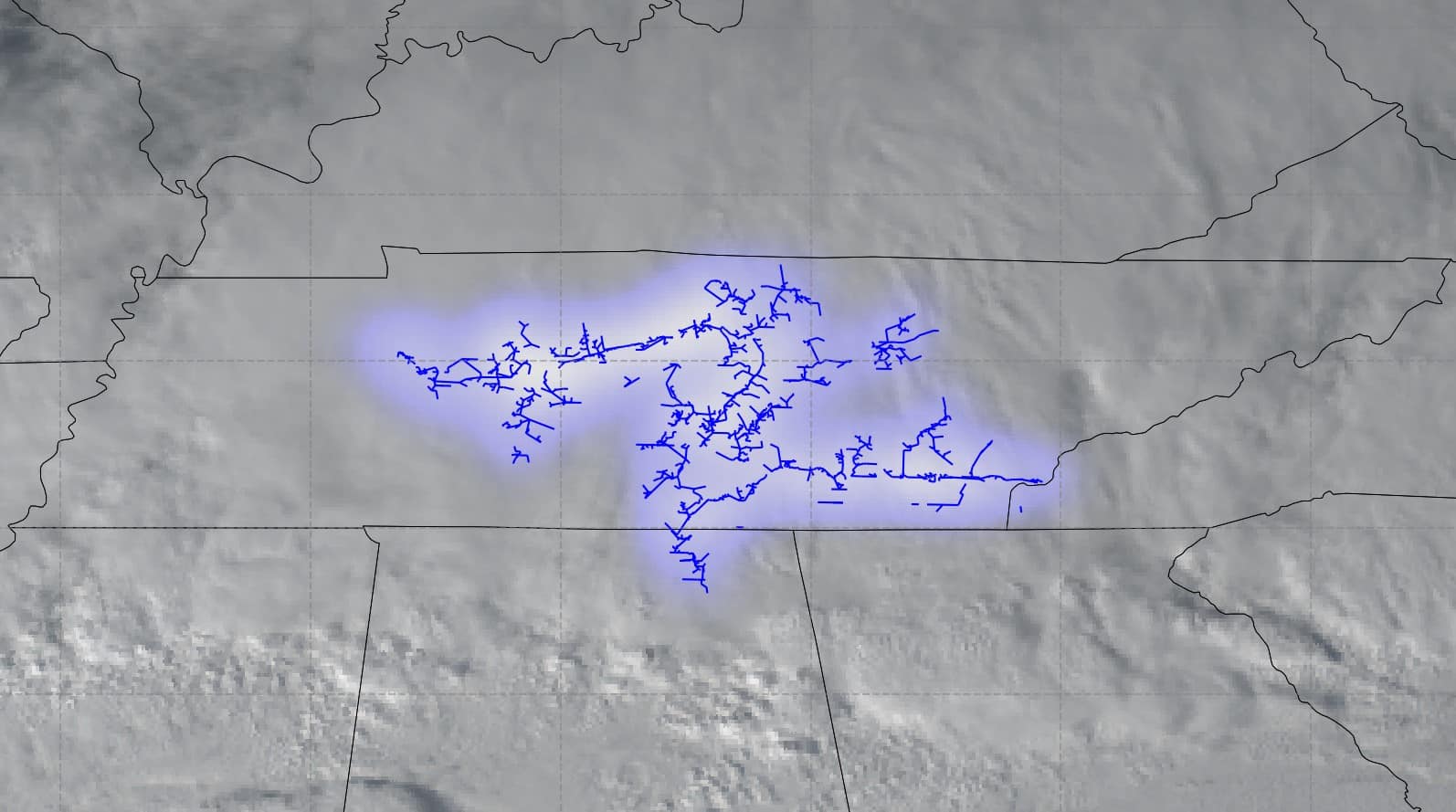
Superbolts – the rare and most extreme form of lightning — can be more than a thousand times brighter than regular lightning flashes and have a distinct formation mechanism – according to a new study done in the US. As well as shining new light on the origins of this impressive phenomenon, this latest research could also help inform lightning safety efforts.
Superbolts were first reported in 1977, following observations made by the satellite constellation of Project Vela, which was a US programme to monitor the globe for nuclear explosions. Vela spotted flashes that were at least 100 times more intense than typical lightning and lasted about 1 ms. Superbolts were spotted across the globe, although more frequently over the North Pacific in regions of strong convective activity and in association with severe thunderstorms.
Since then, the superbolt mechanism and whether superbolts are a distinct form of lightning has remained a subject of debate. One argument, for example, suggests that the detection of apparent superbolts by Vela and other satellites may simply be an artefact of these observatories having a good vantage point.
Good views
Normally when lightning is viewed from space, cloud cover makes it appear dimmer than it would appear on the ground. However, Michael Peterson, an atmospheric scientist at the Los Alamos National Laboratory in New Mexico points out that “sometimes the satellite is in just the right place to see the source with little-to-no cloud in the way, and this causes the flash to appear brighter than normal. This usually happens when the satellite is closer to the horizon and can see below the upper anvil cloud surrounding the storm core.”
In two new studies done at Los Alamos, Peterson, Erin Lay and Matt Kirkland analysed data collected by optical sensors aboard the Fast On-Orbit Detection of Transient Events (FORTE) and GOES-16 satellites to determine the brightness of superbolt events. FORTE provided twelve years of lightning observations, while two years of data gathered by the Geostationary Lightning Mapper (GLM) aboard GOES-16 were analysed.
The GLM recorded 2,021,554 superbolt events with a magnitude of at least 100 times that of the average for regular lightning, while FORTE detected 20,283. The team found that the global distribution of the least radiant superbolts mirrored that of regular lightning. The most extreme events, however, had a unique distribution, with those seen by GLM (which views the Americas) concentrated over the central US and South America’s La Plata basin.
The team determined that the brightest superbolt events typically arise from rarer positively charged cloud-to-ground flashes, rather than the negatively charged phenomena that characterize most lightning. “There is a link between superbolts and high-current positive polarity strokes in the long horizontal lightning flashes that stretch for hundreds of kilometres known as ‘megaflashes’,” says Peterson. This is unlike regular lightning, which originates in the main, negatively charged region in the mid-levels of thunderstorms – and thus carries a net negative charge to the ground.
Bolt from the blue
“Positive-polarity lightning comes from a positive charge region. The most prominent of these is usually located above the main negative charge region, so positive-polarity lightning tends to travel over longer distances to reach the ground,” Peterson adds. “This is more difficult to do, and you often see this occur outside of the thunderstorm core where it can strike as a bolt from the blue.”
The team often saw superbolts in clouds as part of larger flashes involving extensive networks of ionized lightning channels. These networks move larger amounts of charge than normal and have more compact, lightning bolts. They therefore produce considerably more intense optical emissions than normal lightning.
“One lightning stroke even exceeded 3 TW of power – thousands of times stronger than ordinary lightning detected from space,” notes Peterson. “Understanding these extreme events is important because it tells us what lightning is capable of.”
Protecting wind farms
“Many of the [superbolts] occur over the oceans which deserves to be considered in lightning protection guidance, as the number of wind farms rapidly increases,” observes Martin Fullekrug, a physicist at the University of Bath.
University of Washington physicist Robert Holzworth, meanwhile, is sceptical that “true” superbolts are only associated with positive charge events – which he notes disagrees with the findings of his previous work. The Los Alamos work, he said, “brings up the question about the details of strong lightning detected by RF systems, as compared to optical satellite systems. I think this may be a red herring.”

Pollution boosts risk of lightning
Much remains to be learnt about superbolts, megaflashes and how lightning illuminates storm clouds in general. Peterson says, “We have only recently – in the past few years – started taking the continuous space-based measurements from geostationary orbit that permit these exceptionally-rare cases to be routinely identified,” he explained. “The launch of the Meteosat Third Generation satellite next year will be an important milestone for space-based lightning research because it will cover a key hotspot region for lightning activity – the Congo Basin in Africa – and also a critical hotspot region for superbolts – the Mediterranean Sea.”
The research is described in two papers in the Journal of Geophysical Research: Atmospheres.
